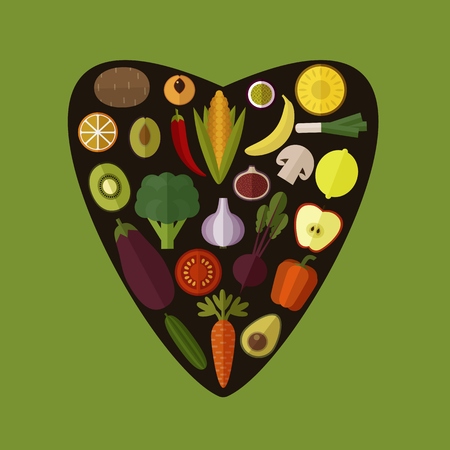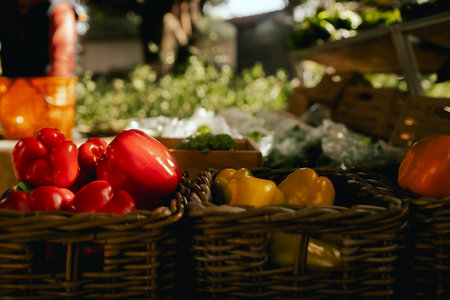Understanding Ripeness: Signs Your Veggies Are Ready
Knowing exactly when your vegetables are ripe is the secret to harvesting for the best taste and nutrition. Each crop has its own cues, but most garden favorites share a few telltale signs you can count on. Start with color—ripe tomatoes turn deep red or yellow, peppers show full, vibrant hues, and cucumbers reach their mature shade of green. Size matters too; zucchini should be firm and about 6-8 inches long for ideal tenderness, while carrots are ready when their shoulders poke above the soil surface. Don’t forget touch—gently squeeze tomatoes or eggplants; they should yield slightly without feeling mushy. Beans snap cleanly when bent, and peas feel plump in the pod. Smell can also guide you: ripe melons often release a sweet scent at the blossom end. Keep in mind that harvesting too early or too late can impact both flavor and storage life, so trust your senses and check your garden daily during peak season. By learning these visual and tactile cues, you’ll pick your veggies at just the right time for maximum taste and nutrition.
Best Time of Day to Harvest
If you want your homegrown vegetables to taste their absolute best and last longer after picking, timing is everything. The cool early morning hours are hands-down the prime time for harvesting most garden produce. During this window, veggies are at peak hydration because they’ve had all night to absorb moisture from the soil and haven’t yet lost water to the midday sun. This means your harvest will be crisper, juicier, and full of flavor.
Picking in the afternoon or evening, especially on hot days, can lead to wilted greens and limp vegetables that don’t store as well. The sugars and flavors in many crops—like sweet corn, peas, and tomatoes—are also at their highest early in the day before the heat causes them to convert into starches or evaporate away.
Why Early Morning Matters
- Better Texture: Cool temps keep greens and fruit firm and crisp.
- Enhanced Flavor: Natural sugars are preserved before the heat dulls them.
- Longer Shelf Life: Less stress from sun means produce stays fresh longer after picking.
Vegetables That Benefit Most from Morning Harvest
| Vegetable | Best Harvest Time | Benefit |
|---|---|---|
| Lettuce & Spinach | Early morning | Crisper leaves, less wilting |
| Tomatoes | Morning (after dew dries) | Sweeter flavor, firmer texture |
| Peas & Beans | Early morning | Sweeter pods, higher moisture content |
| Cucumbers & Zucchini | Morning | Crisper skin, better storage quality |
Pro Tip: Avoid Harvesting When Wet
If you can, wait until any morning dew has dried before picking. Harvesting wet plants can spread diseases like powdery mildew or blight through your garden beds.

3. Harvesting Methods: Tools and Techniques
When it comes to harvesting your homegrown vegetables, using the right tools and methods can make all the difference in preserving flavor, texture, and shelf life. For most garden veggies, a pair of sharp garden shears or pruners will help you make clean cuts without crushing stems or bruising tender fruits. For root crops like carrots and potatoes, a sturdy digging fork lets you gently lift them from the soil without slicing into the produce. Always keep your tools clean and sanitized to prevent spreading diseases between plants.
Gentle handling is just as important as using the correct tool. Avoid yanking or twisting vegetables off the plant—this can cause bruising or even pull up roots, damaging both the crop and the plant. Instead, support the fruit or vegetable with one hand while cutting with the other. For delicate crops like tomatoes or berries, harvest in the early morning when theyre cool and firm for best results. Place harvested items in shallow baskets or trays rather than deep buckets to avoid piling and crushing.
Remember, every crop has its own preferred technique. Beans should be snipped individually, leafy greens can be cut with scissors a few inches above the base, and squash stems are best severed with a sharp knife to avoid tearing. By investing in quality tools and treating your harvest with care, youll enjoy fresher flavors and longer-lasting produce straight from your backyard.
4. Specific Harvest Tips for Popular Veggies
Knowing exactly when and how to harvest your favorite vegetables can make all the difference in flavor and storage life. Here’s a breakdown of best practices for some classic American garden staples.
Tomatoes
Harvest tomatoes when they are fully colored and slightly firm to the touch. For most varieties, this means the fruit should be deep red (or yellow, orange, or purple depending on the type) with no green spots left except maybe at the stem. Picking in the morning after dew dries helps avoid splitting. Gently twist and pull, or use garden scissors to snip at the stem.
Quick Reference Table: Tomato Harvest Guide
| Variety | Best Harvest Stage | Key Signs |
|---|---|---|
| Slicing/Beeftsteak | Full color, slightly soft | No green shoulders; smooth skin |
| Cherry/Grape | Full color, firm | Easily comes off vine, glossy skin |
| Paste/Roma | Deep color, still firm | Thick flesh; skin not wrinkled |
Pepper Varieties (Bell & Hot)
Bells can be picked green for crunch or left until red/yellow/orange for sweetness. Hot peppers are usually harvested once they hit their mature color. Always cut peppers off with scissors or pruners to avoid damaging plants. Wear gloves if handling hot varieties!
Pepper Harvest Cheat Sheet
| Pepper Type | Mature Color | Flavor Profile When Picked |
|---|---|---|
| Bells (Green) | Green | Crisp, grassy, less sweet |
| Bells (Red/Yellow) | Red/Yellow/Orange | Sweeter, fuller flavor |
| Jalapeño/Cayenne/etc. | Red or deep green | Spicy heat increases with maturity |
Beans (Bush & Pole)
The key is tenderness! Pick beans when they’re young and slender—about as thick as a pencil—and before seeds inside bulge out. Hold the vine steady and snap pods off gently to avoid breaking stems.
Pro Tip:
If you keep picking regularly, beans will keep producing longer into the season.
Leafy Greens (Lettuce, Spinach, Kale)
Lettuce and spinach are best when leaves are young and tender—pick outer leaves first, leaving centers to regrow. For kale and collards, harvest older lower leaves as needed; younger leaves are sweeter but tougher ones work well cooked. Avoid harvesting during midday heat to prevent wilting.
Summary Table: Leafy Greens Picking Guide
| Type | When to Pick | Harvest Method |
|---|---|---|
| Lettuce/Spinach | Younger leaves, 3-6 inches long | Snip outer leaves or cut whole head |
| Kale/Collards | Mature lower leaves | Tear or cut individual leaves |
The right timing and technique for each crop ensures you’ll enjoy peak flavor and get more from your home vegetable patch all season long.
5. Post-Harvest Care: Storing for Freshness
Once you’ve harvested your vegetables at peak ripeness, proper post-harvest care is key to keeping that garden-fresh taste on your table. Handling and storing your produce the right way can make all the difference in flavor, texture, and shelf life.
Refrigeration: Keep It Cool
Most veggies benefit from immediate cooling to slow down spoilage. Leafy greens like lettuce and spinach should be washed, dried thoroughly, and stored in airtight containers or produce bags in the crisper drawer. Root crops such as carrots or beets do well in perforated plastic bags to maintain humidity while allowing airflow. Tomatoes and potatoes are exceptions—they prefer room temperature out of direct sunlight to preserve their flavor.
Canning and Preserving: Enjoy Year-Round Flavor
If you have an abundant harvest, traditional methods like canning, pickling, or fermenting let you enjoy your garden bounty all year long. For example, tomatoes can be canned as sauce or salsa, cucumbers make crisp pickles, and beans are great for pressure canning. Always follow USDA-approved recipes for food safety when home-canning.
Freezing: Lock In Freshness
Freezing is a simple way to extend the life of many vegetables. Blanching—briefly boiling then plunging into ice water—helps preserve color and nutrients before freezing. Store blanched veggies in freezer-safe bags with as much air removed as possible to prevent freezer burn.
Smart Storage Tips
For best results, keep similar produce together and label everything with harvest dates. Avoid washing produce until just before use unless it’s especially dirty; excess moisture can speed up spoilage. Finally, check stored items regularly and remove anything past its prime to prevent it from affecting the rest.
With these post-harvest strategies, you’ll maximize both the taste and longevity of your garden-fresh veggies—bringing a little bit of harvest time to your meals every day.

